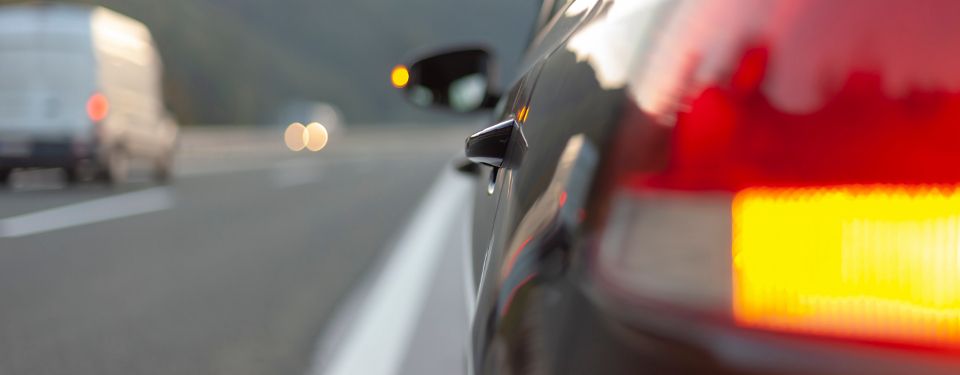
If you have an accident or you break down, it is important to think about your own safety and that of others. Here is some advice on what to do in the event of an accident or breakdown in different situations.
If you are involved in a road accident:
- Think of your personal safety and that of your passengers. Wear a reflective safety vest/clothing that meets the requirements of one of the standards EN 471 or EN 1150 and turn on your hazard warning lights.
- Assess the situation and secure the scene of the accident with your warning triangle to prevent further danger.
If anyone is injured:
- Only move injured persons when absolutely necessary (for example, if the car is on fire).
- Immediately call the rescue services by dialling 112 or 113.
- Take care of injured persons until the rescue services arrive.
If no-one is injured:
- Move the vehicles off the road, if possible, and take photos of the accident before moving the vehicles. This is important, especially if you leave the scene of the accident to complete the accident report form elsewhere (e.g. on a rest area), in case one of the drivers involved leaves the scene of the accident. In addition, photos help to avoid any misunderstandings with the other party and can help you to explain what happened and do the sketch for the accident report.
- Draw up an accident report by mutual consent and, if necessary, call a breakdown service. The accident report form must not be completed on the scene of the accident.
- If the other driver refuses to cooperate, contact the Police by calling the emergency number 113.
On the motorway
- Clear the traffic lanes (even if the vehicles are damaged) if possible.
- If the vehicles are still in working order, take the next exit or agree to meet on the nearest rest area to complete the accident report form on a car park or in a service station during inclement weather. Before leaving, remember to take a photo or note the registration number of the other driver's vehicle.
- If you have any minor (technical) problems, do not stop on the motorway or on the hard shoulder, but take the next exit so that you can deal with the problem safely.
- Park your vehicle as far to the right as possible on the hard shoulder and turn on your hazard warning lights.
- Get all the passengers to put on yellow or orange reflective safety vests.
- Get the passengers to get out of the vehicle on the right-hand side and climb over the crash barriers where it is safer. Even in bad weather, NEVER stay in your vehicle!
- Inform the rescue services by calling the emergency number 113. Go back to your car, staying behind the crash barrier at all times and wait there until help arrives. Do not get back in your vehicle.
- Never try to repair your vehicle or change a wheel on the hard shoulder. In fact it is illegal to repair or have a vehicle repaired on a public highway. (A 160-15).
- You must not abandon your vehicle under any circumstances. Call a breakdown service to remove it as soon as possible.
- Never try to stop vehicles by stepping into the traffic lanes or the hard shoulder. Be aware that a pedestrian's life expectancy on the motorway is very limited!
In a tunnel
- Turn on your hazard warning lights.
- If possible, get your vehicle out of the tunnel. If this is not possible, park the vehicle in one of the safety recesses, on the hard shoulder or as far to the right as you can.
- Turn off the engine and leave the key in the ignition.
- Get out of the vehicle on the right-hand side, paying attention to the traffic, and wear your reflective safety vest.
- Go to the nearest SOS recess and use the emergency phone (not your mobile phone) to inform the control centre.
- Stay in the SOS recess until your vehicle has been secured by the National Roads Administration or the police.
- Call a breakdown service to remove your vehicle as quickly as possible.
- Never try to stop vehicles by stepping into the traffic lanes or the hard shoulder.

